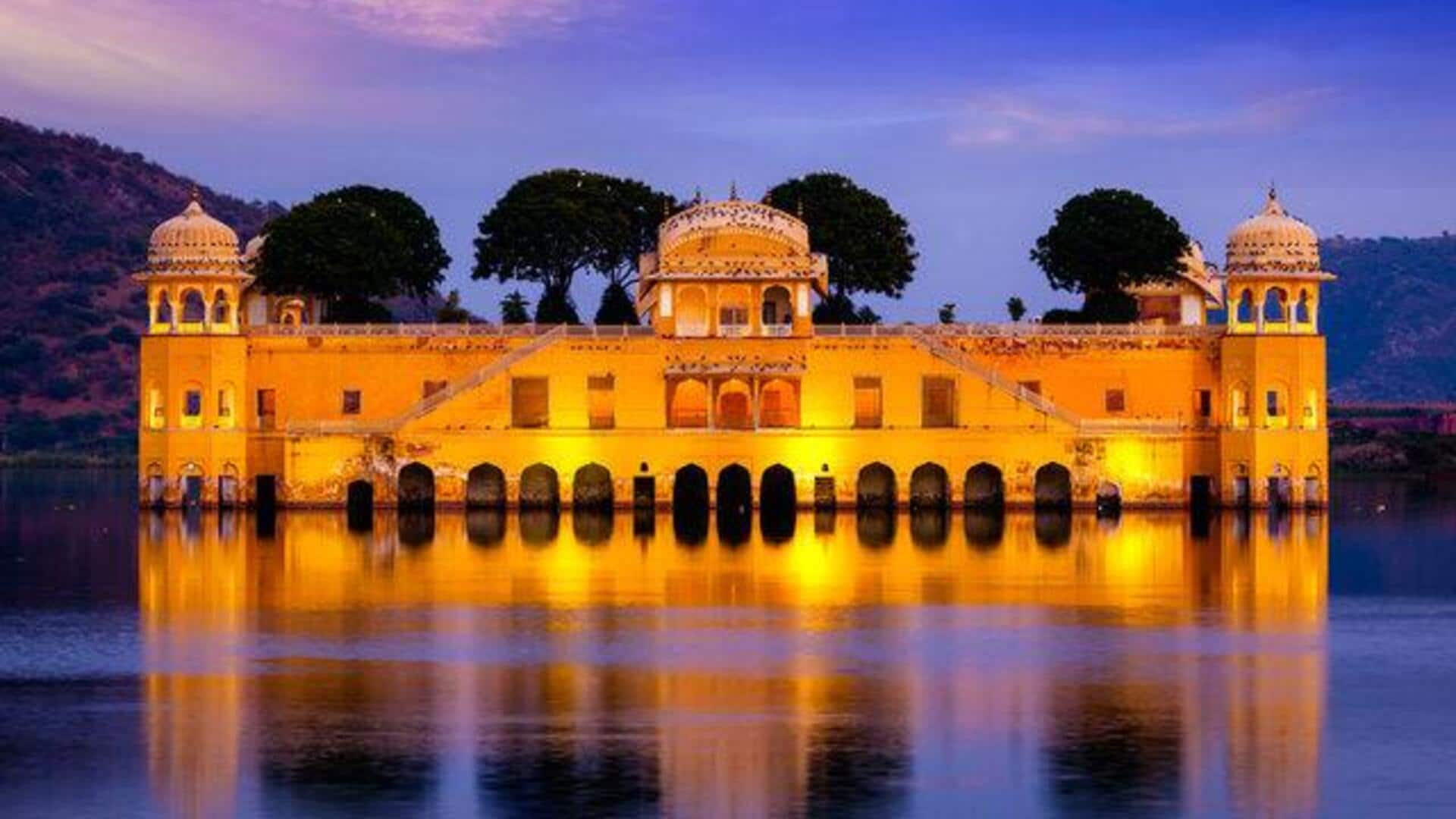
You must explore these water palaces in India
What's the story
India is home to a rich tapestry of historical architecture, and among its treasures, are the lesser-known ancient water palaces. Often overshadowed by more famous landmarks, these architectural marvels offer a glimpse into the ingenuity and artistry of bygone eras. Built with intricate designs and surrounded by serene waters, these palaces served as royal retreats and centers of leisure. Here's a look at them.
Jaipur's jewel
Jal Mahal: The water palace of Jaipur
Jal Mahal, situated in the heart of Man Sagar Lake, Jaipur, is a stunning example of Rajput architecture. Built in red sandstone, this five-story palace has four floors submerged when the lake is full. Built for the royal gatherings, it now is a testament to Rajasthan's grand past. People can enjoy views from the banks or take boat rides to reach this architectural marvel.
Udaipur's icon
Udaipur's Lake Palace: A floating marvel
The Lake Palace in Udaipur is among India's most illustrious water palaces. Located on Jag Niwas Island in Lake Pichola, it was constructed in 1746 as a summer retreat for Maharana Jagat Singh II. The palace seems to float on water and commands mesmerizing views of the Aravalli Hills. Its white marble walls feature intricate carvings and mirror work that reflect sunlight and moonlight beautifully.
Kerala's heritage
Padmanabhapuram Palace: A glimpse into Kerala's past
Padmanabhapuram Palace is located near Thuckalay in Tamil Nadu but was part of erstwhile princely state Travancore in Kerala. The wooden palace complex reflects the Keralan architecture with its sloping roofs and exquisite woodwork. Surrounded by lush greenery and water bodies used for irrigation centuries ago, it gives visitors a taste of authenticity, steeped in history.
Vadodara's pride
Laxmi Vilas Palace: An architectural wonder
Laxmi Vilas Palace stands majestically amid sprawling gardens in Vadodara, Gujarat—a city rich in cultural heritage. It is one of the many examples of Indo-Saracenic Revival style architecture. The style was common during British rule in India from the late nineteenth century onwards. The independence era ended colonialism altogether after 1947, paving the way toward the modern-day democratic governance system we see nationwide today.